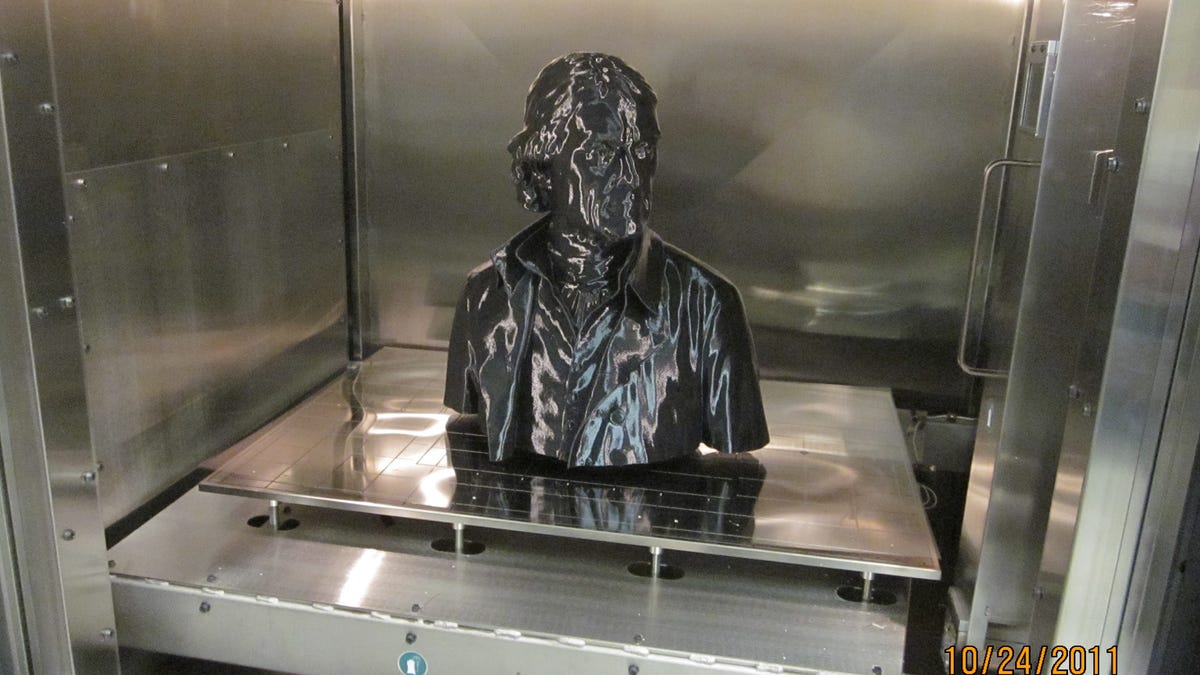Smithsonian turns to 3D to bring collection to the world
A new effort under way at the world's largest museum and research institution could eventually mean more of its 137 million objects will be publicly available, even if just via 3D digital models.

With just 2 percent of the Smithsonian's archive of 137 million items available to the public at any one time, an effort is under way at the world's largest museum and research institution to adopt 3D tools to expand its reach around the country.
CNET has learned that the Smithsonian has a new initiative to create a series of 3D-printed models, exhibits, and scientific replicas--as well as to generate a new digital archive of 3D models of many of the physical objects in its collection.
Representative of that effort, the museum is touting the 3D printed replica of a Thomas Jefferson statue that it recently installed for the "Slavery at Jefferson's Monticello: Paradox of Liberty" exhibit at the National Museum of African American History and Culture. According to the museum, this is the "largest 3D printed museum quality historical replica" on Earth and is a copy of a statue on display at Monticello, the Thomas Jefferson museum in Virginia.
According to Adam Metallo, a 3D digitization coordinator at the Smithsonian, the team working on the Jefferson replica project decided that rather than use a traditional method involving rubber molding and casting, they would utilize modern technologies. Taking a Minolta laser scanner worth well up to $100,000 along, they contracted with Studio EIS to generate an intricately detailed 3D model of the statue that was then turned into the 3D printed replica by RedEye on Demand.
Now, with that high-end scanner, as well as less expensive tools that include normal digital cameras and freely available cloud-based digitization software, Metallo and his fellow 3D digitization coordinator Vince Rossi are slowly setting out to begin building a new Smithsonian digital archive. They hope this initiative will eventually lead to scores of 3D printed exhibits, as well as countless 3D models that could theoretically be used in the museums, in schools, or just about anywhere people have an interest in the Smithsonian's vast physical holdings.
The only problem? They need more companies that, like RedEye On Demand, have the resources to help bring the efforts to fruition.
Two people, 137 million objects
Metallo and Rossi's goal is clear: they want to build a large collection of 3D scanned objects and archaeological sites that can support the entire Smithsonian complex. They've got technology on their side--with minimally invasive laser scanners they can capture the geometry of just about any object or site with accuracy down to the micron level.
But their resources are few, and the two told CNET that they have to be smart about the projects they choose to digitize. They have to know that their work is going to tell a story in a new way or give researchers new tools in order to justify spending the time it takes to do the work.
Still, their goal is noble. They're creating what Rossi called a "digital surrogate," a "new form of museum collection" that could mean a wealth of information that could be available to anyone with a computer, or at the very least, to a wide variety of museums, schools, and other interested institutions.
At the same time, they face one of the key problems of digital archiving: ensuring that the data they create today will still be usable decades from now. That's because Rossi explained, software tools that are in use today may be obsolete down the road.
Still, he said, it's also true that 3D models are really just large sets of geometry captured in millions of points, data that is stored in long text files. So as long as they're thoughtful about how they do it, recovering the data shouldn't be a problem in the future.
But for now, it's just the two of them leading this process, and Metallo said that they're able to tackle just a few dozen projects a year. Some will end up as 3D printouts like the Jefferson model, while others will live on as digital 3D models. "We're trying to assess how to scale that up," Metallo said, "how to make digital (models publicly) available."
Ultimately, the Smithsonian is exactly the right institution to undertake this project, given the scope of its collections. All told, Metallo said, there are 137 million objects in the various collections, and only 2 percent of that is available for viewing to the people who make their way to Washington, D.C. and one of the organization's many museums.
But what about those who can't get to the nation's capital? "If we could leverage the power of 3D to bring a portion of that collection to the world," Metallo said, "that would be incredibly powerful, and definitely worth the expense."

